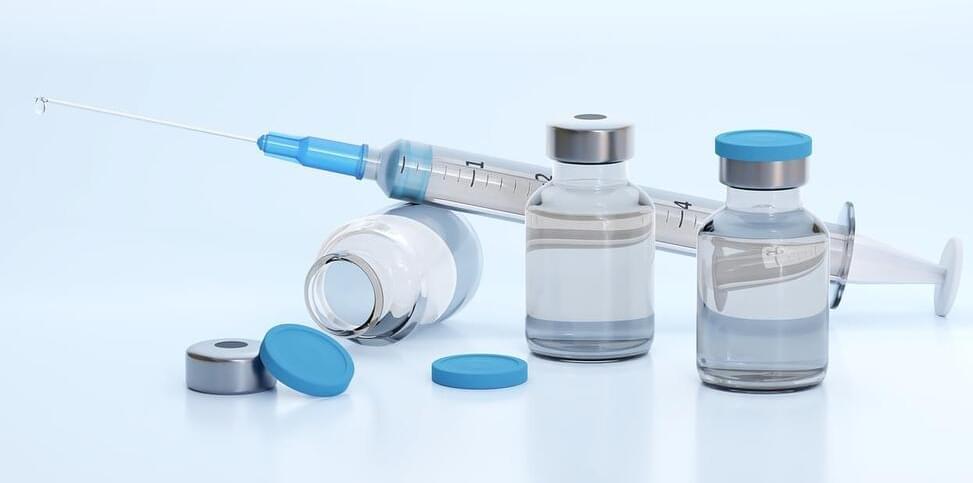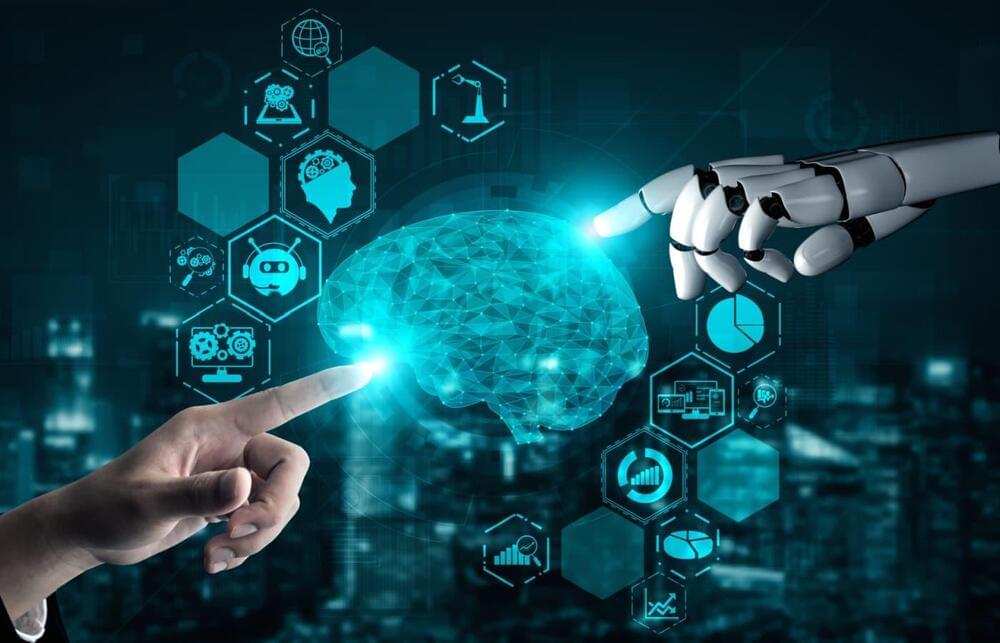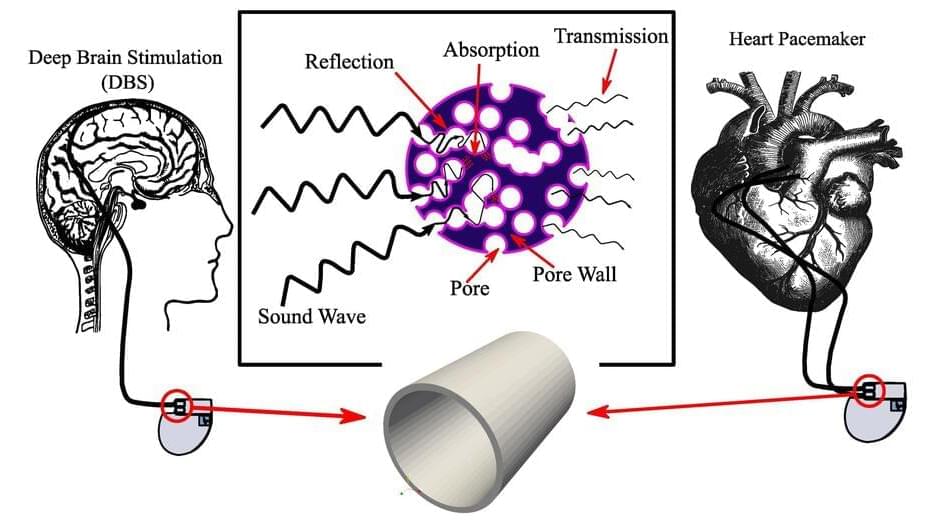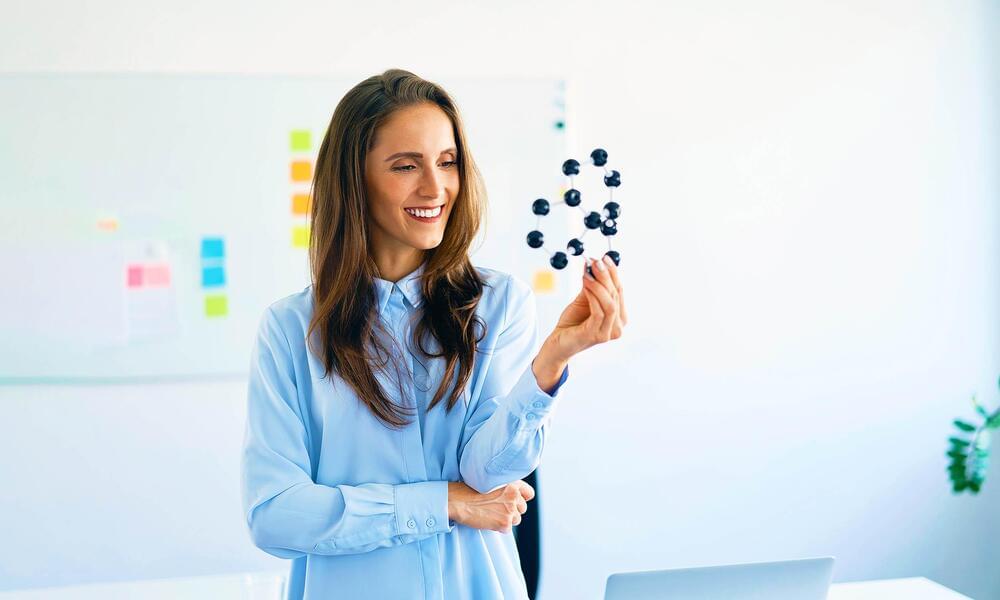Exponential Medicine is a unique and intensive four-day experience that gathers world-class faculty, innovators and organizations from across the biomedical and technology spectrum to explore and leverage the convergence of fast moving technologies in the reinvention and future of health and medicine.
Category: nanotechnology – Page 68

Nanoparticle Technology Improves Cancer Therapy
Vaccines have advanced the field of health and medicine throughout the last century. They are commonly given before a disease can occur to expose individuals to invading pathogens. Vaccines given as a preventative treatment helps the immune system build an immune response against disease that the person may encounter in the future. When an individual gets a shot at the doctor’s office they are injecting an attenuated version of the disease. The body will then recognize this pathogen as foreign and build an immune response against it. This is why many times a person feels sick after a few days from a vaccination – the body is activating the immune system to eliminate the disease.
Many types of vaccines exist and are developed to optimize delivery of attenuated pathogen. Arguably, the most well-known type of vaccine uses messenger ribonucleic acid (mRNA). These vaccines work by delivering mRNA of a virus, which allows human cells to produce viral protein. The immune system responds strongly to the viral proteins and targets them with different immune cells, while also generating antibodies against it. Once the body has built this response, the immune system can more easily target the same virus in the future. This recognition of specific infections is referred to as immunological memory. Currently, the only mRNA vaccines Food and Drug Administration (FDA) approved are for COVID-19. However, the efficient use of mRNA vaccines for COVID-19 have scientists wondering if this format can be used in other disease settings, including cancer.
A recent article in Nature Communications, by Dr. Damya Laoui and others introduce a novel therapeutic approach in which mRNA is integrated into nanoparticles to overcome tumor progression. Laoui is a group leader at Vlaams Instituut voor Biotechnologie (VIB) in Brussels, Belgium. Her work focuses on immune cell activation through specific immune cells known as macrophages and dendritic cells. Laoui also works on developing novel personalized immunotherapies for patients with hard-to-treat cancers.


Rethinking the brain pacemaker: How better nanocomposites can improve signals
Two years ago, a medical professional approached scientists at the University of Tabriz in Iran with an interesting problem: Patients were having headaches after pacemaker implants. Working together to investigate, they began to wonder if the underlying issue is the materials used in the pacemakers.
“Managing external noise that affects patients is crucial,” author Baraa Chasib Mezher said. “For example, a person with a brain pacemaker may experience interference from external electrical fields from phones or the sounds of cars, as well as various electromagnetic forces present in daily life. It is essential to develop novel biomaterials for the outlet gate of brain pacemakers that can effectively handle electrical signals.”
In an article published this week in AIP Advances, Mezher, who is an Iraqi doctoral student studying in Iran, and her colleagues at the Nanostructured and Novel Materials Laboratory at the University of Tabriz created organic materials for brain and heart pacemakers, which rely on uninterrupted signal delivery to be effective.

Material that “will change the world” is declared safe for humans
A nanotechnology material called graphene has captured attention worldwide, with many scientists dubbing it the latest “wonder material” with the potential to have an enormous human impact.
Graphene’s structure, made of carbon atoms arranged in a thin sheet, has properties that make it a strong contender to revolutionize many industries.
It’s often regarded as the thinnest and strongest material discovered so far, showing flexibility that few other materials can match. Its potential uses range from improving electronic devices to creating better ways to clean water.

Nanostructured two-dimensional gold monolayers expand possibilities for catalysis, electronics, and energy conversion
Researchers have created nearly freestanding nanostructured two-dimensional (2D) gold monolayers, an impressive feat of nanomaterial engineering that could open up new avenues in catalysis, electronics, and energy conversion.
The research has been published in Nature Communications.
Gold is an inert metal which typically forms a solid three-dimensional (3D) structure. However, in its 2D form, it can unlock extraordinary properties, such as unique electronic behaviors, enhanced surface reactivity, and immense potential for revolutionary applications in catalysis and advanced electronics.
Controlling matter at the atomic level: University of Bath breakthrough
Controlling matter at the atomic level has taken a major step forward, thanks to groundbreaking nanotechnology research by an international team of scientists led by physicists at the University of Bath.
This advancement has profound implications for fundamental scientific understanding. It is also likely to have important practical applications, such as transforming the way researchers develop new medications.
S smallest movie. In the film, single molecules, consisting of two atoms bonded together, were magnified 100-million times and positioned frame-by-frame to tell a stop-motion story on an atomic scale. +.
Physicists are getting closer to controlling single-molecule chemical reactions – could this shape the future of pharmaceutical research?

Novel mixture of mRNA in nanoparticles show therapeutic potential against tumor progression
Therapeutic mRNAs offer great potential as a versatile and precise tool against cancer and other diseases. However, the therapeutic effectiveness is limited by the poor translation uptake of naked mRNA. To circumvent this challenge, researchers from VIB, VUB, Ghent University, and eTheRNA Immunotherapies developed an immunotherapeutic platform based on lipid-based nanoparticles (LNPs).
In different cancer models, applying a novel mixture of immunotherapeutic mRNA encapsulated in LNPs led to a clearly improved therapeutic efficacy with limited side effects. This proves the added value of the platform to the development of effective mRNA immunotherapies. The work is published in the journal Nature Communications.
The COVID-19 pandemic and recent Nobel Prize recognition have spotlighted mRNA therapies as a promising approach for diseases like cancer. With precision, scalability, and controlled immune activation, mRNA-based immunotherapy can encode proteins that stimulate the immune system to target and destroy cancer cells. Yet, naked mRNA is unstable, prone to degradation, and poorly absorbed by cells, limiting its effectiveness. This makes the development of reliable delivery methods essential for the future success of mRNA immunotherapies.

Quantum mechanical principle of strong coupling leads to better optical sensors
A team of researchers from the University of Cologne, Hasselt University (Belgium) and the University of St Andrews (Scotland) has succeeded in using the quantum mechanical principle of strong light-matter coupling for an optical technology that overcomes the long-standing problem of angular dependence in optical systems.
The study, “Breaking the angular dispersion limit in thin film optics by ultra-strong light-matter coupling,” published in Nature Communications presents ultra-stable thin-film polariton filters that open new avenues in photonics, sensor technology, optical imaging and display technology.
The study at the University of Cologne was led by Professor Dr. Malte Gather, director of the Humboldt Center for Nano-and Biophotonics at the Department of Chemistry and Biochemistry of the Faculty of Mathematics and Natural Sciences.

Is DNA Data Storage Ready for Data Centers?
Biobanks are an obvious use case for DNA data storage. “With this technology, you could convert a biobank that is the size of a football field into something that can fit with everything in the palm of your hand,” says Banal. With encapsulation technologies, the DNA samples can be stored at room temperature. Compared to storing samples in freezing conditions in conventional biobanks or data centers that require extensive cooling, this has significantly lower energy consumption.
Until recently, scientific and medical applications were the sole drivers behind storing data in DNA. New research could broaden its scope to cryptography and nanotechnology. Another interesting development is the emerging intersection of DNA data storage and DNA computing. Indexing methods for DNA data retrieval mentioned earlier are an early example of that. Today, one of the most pressing commercial drivers of the technology is the data centers.
As researchers and startups chip away at its limitations, DNA data storage is becoming a viable commercial solution for storing all kinds of data at scale. The DNA Data Storage Alliance, a consortium founded in 2020, counts legacy data storage giants such as Western Digital and Seagate among its members.